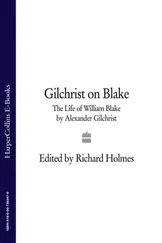This is also the beginning of the “country of the Camisards”, the Protestant rebels of the regional insurrection of 1702-3, whose history had fascinated Stevenson from adolescence, when he sketched out The Pentland Rising about a similar upheaval in the eighteenth-century Scottish highlands.
The last eight chapters of the Travels are largely concerned with this Camisard history, together with Stevenson’s reflections on the nature of religious belief and bigotry. The effect of this in the published text is to give the last third of his journey a curiously impersonal feel, an essay in regional history, which is quite at odds with the almost confessional tone of the previous days. He retells the stories of the various Camisard commanders—“Spirit” Séguier, Roland and Joani—together with the atrocities performed by the Catholic generals like Maréchal Julien in suppressing the movement (despite promised English aid) on the orders of the French King. It is a saga not unlike that of twelfth-century Cathars, persecuted by the armed forces of the Inquisition, further south in the Basses-Pyrenees; and it shows the nascent historical novelist in Stevenson.
When he stands on the top of Mont Mars, after a long, lonely, exhausting climb, his reflections appear to be totally absorbed in the long-ago struggles of these French covenanters:
I was now on the separation of two vast watersheds; behind me all the streams were bound for the Garonne and the Western Ocean; before me, was the watershed of the Rhone. Hence, as from the Lozère, you may see in clear weather the shining of the Gulf of Lyons, and perhaps from here the soldiers of Salomon may have watched for the topsails of Sir Cloudesley Shovel, and the long-promised aid from England. You may take this ridge as lying in the heart of the country of the Camisards; four of the five legions camped all round it and almost within view—Salomon and Joani to the north, Roland and Castanet to the south—and when Julien had finished his famous work, the devastation of the High Cévennes, which lasted all through November and October, 1703, and during which four hundred and sixty villages were utterly subverted, a man standing on this eminence would have looked forth on a silent, smokeless, and dispeopled land.
It is a vivid picture; and standing on the same high, lost ridge myself, it was easy to imagine Stevenson’s gaze traversing the wild horizon, and conjuring up the shades of the lost Camisards: Spirit Séguier leaping to his death from the window of a surrounded house in Le Pont de Montvert, Roland fighting to the end with his back against an olive tree.
Yet such an image of Stevenson, immersed in historical reflections on his last days, struck me as false. In his original journal there is only one single glancing mention of the Camisards, while he is talking to a poacher—“a dark military-looking wayfarer, who carried a game-bag on a baldrick”—on the general theme of the local Protestantism. For the rest, the colourful accounts and anecdotes of Camisard history are much later additions to the text, worked up from Peyrat’s Pasteurs , the novels of Dinocourt and Fanny Reybaud, and half a dozen other sources, long after Stevenson’s return to England.
The visions of the Camisards in fact serve to cover up Stevenson’s completely different preoccupations at the time. The original journal becomes brief, disjointed, dreamlike and in places highly emotional. Though he travels with increasing speed and purpose he is sunk in his own thoughts, physically driving himself—and Modestine—towards the point of exhaustion.
As I followed him, I was aware of a man possessed, shut in on himself, more and more difficult to make contact with. The narrative of the trip became at the same time more intense, more beautiful, and on occasions almost surreal. His wayside meetings were fewer, but obviously more significant to him. The general descriptions take on a visionary quality: strangely awestruck meditations on the huge, shadowy chestnut trees overhanging his route; the dusty track glowing eerily white under the moon (it is noticeable how often now he seems to be travelling after dark); a solemn night spent high up amidst the pines on the side of Mont Lozère; another deeply troubled camp with drawn pistol on the precipitous terraces above the gorge of the Tarn; and a period of black depression walking through the deserted valley of the Mimente below Mont Mars:
But black care was sitting on my knapsack; the thoughts would not flow evenly in my mind; sometimes the stream ceased and left me for a second like a dead man; and sometimes they would spring up upon me without preparation as if from behind a door … the ill humours got uppermost and kept me black and apprehensive. I felt sure I must be going to be ill; and at the same time, I was well aware that a night in the open air and the arrival of holy and healthy dawn would put me all right again with the world and myself.
The moody fluctuations of this entry are typical: the way the real river has become confused with the inward stream of his thoughts; the way the knapsack has become a more than physical weight; the way he longs for a “holy and a healthy” dawn. These were all, I knew, symptoms of the solitary walker travelling too long alone in high bare places. But for Stevenson they had a special source, a specific pain. Introspection had reached a critical point, and I was hardly surprised to discover one entry which refers to “this disgusting journal”. I followed him now with a kind of trepidation.
Over the first of the “high ridges”, the Montagne du Goulet, Stevenson abandoned the zigzag donkey track, and tried to push Modestine straight up through the trees, beating her—“the cursed brute”—with a savagery he later shamefully regretted. She was bleeding frequently now “from the poop”, but it seems to have been some time still before he realised she was on heat. He crossed over the high bare crest, marked only by upright stones posted for the drovers, and came down to Le Bleymard, tucked in the valley, with “no company but a lark or two”.
I crossed the same ridge shortly after dawn, having spent the night on a corner of the village green at L’Estampe, observed by a patient farm dog, who accompanied me almost all the way up, grinning at Le Brun and chasing rabbits. After he left, the sound of cocks crowing and wood being chopped rose from far below, clear and minute, like tiny bubbles of sound bursting up through liquid. I felt alone in the world, half-floating, tethered by some fragile thread, sweating and light-headed. My diary remarks tersely: “Homesick. White stones on the track scattered like broken trail, tramps’ messages. Read RLS poems out loud to attentive clouds. But when I come to ‘Dark brown is the river, Golden is the sand’ I burst into tears. Go down the track crying. What a fool. At Bleymard write letters.”
I am still not sure quite what significance that little poem had. But it is to do with travelling, or at least a childish dream of travel; and perhaps even more the idea of landfall, of coming home. I suppose it is intolerably sentimental, yet it does capture something pristine about the Stevenson notion of “going away”, and just because it was written for children by a thirty-year-old man (it comes from A Child’s Garden of Verses ) this does not make the core of the feeling any less permanent a part of Stevenson’s adult make-up. It is called “Where Go the Boats?” and I give it here as a kind of touchstone:
Dark brown is the river,
Golden is the sand.
It flows along forever,
With trees on either hand.
Green leaves a-floating,
Castles of the foam,
Boats of mine a-boating—
Where will all come home?
On goes the river,
And out past the mill,
Читать дальше












